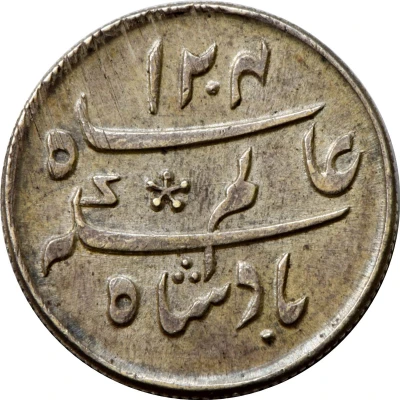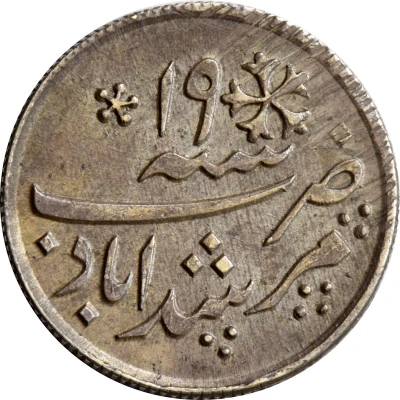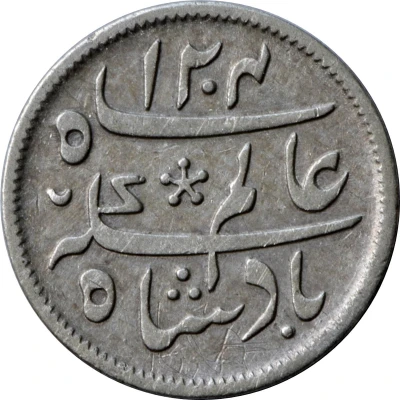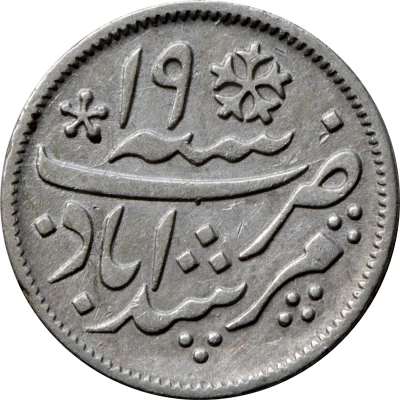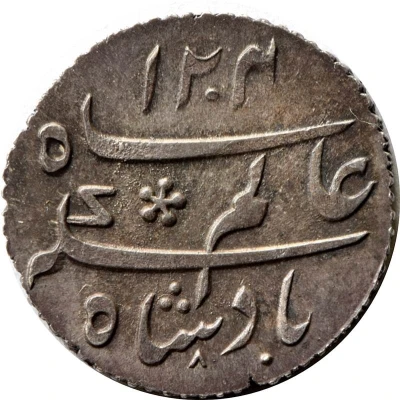
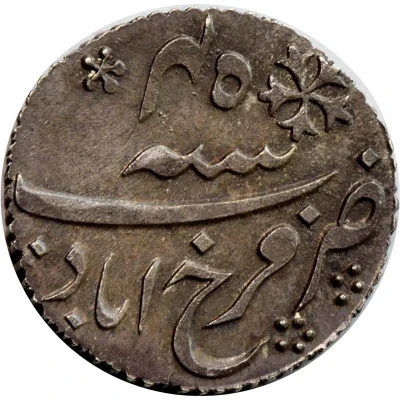

© Joseph Kunnappally
¼ Rupee - Shah Alam II ND
| Silver (.909) | 2.92 g | 16.9 mm |
| Issuer | Bengal Presidency (British India) |
|---|---|
| Type | Standard circulation coin |
| Years | 1820-1831 |
| Value | ¼ Rupee |
| Currency | Rupee (1765-1835) |
| Composition | Silver (.909) |
| Weight | 2.92 g |
| Diameter | 16.9 mm |
| Shape | Round |
| Orientation | Medal alignment ↑↑ |
| Demonetized | Yes |
| Updated | 2024-10-05 |
| Numista | N#78769 |
|---|---|
| Rarity index | 97% |
Reverse
Legend in Persian: Zarb Farrukhabad sanat 45
Lettering:
۴٥
سنه
ضرب فرخ آباد
Translation: Struck at Farrukhabad in the 45th year
Edge
Vertically milled /Straight grained ||||
Comment
- - Frozen date (AH 1204), Shah Alam II Badshah- Note: Even though the legend seems to indicate mint as Farrukhabad, coins with these mint marks were struck at Calcutta and Banaras mints
- Previous KM #852b
- Banaras mint, inverted v mark on obverse + dot in center of cluster on reverse (see image below)
- Calcutta mint, inverted v mark on obverse - 'ᶺ' , no dot in cluster
Interesting fact
One interesting fact about this coin is that it was minted during a time of great change and upheaval in India. The Bengal Presidency, which was the administrative division of British India that issued this coin, was established in 1717 and lasted until 1947, when India gained independence from British rule. This period saw the transition from the Mughal Empire to British colonial rule, and the coinage of the time reflects this shift in power. The ¼ Rupee coin, in particular, was minted during the reign of Shah Alam II, who was the Mughal Emperor at the time. Despite being made of silver, this coin was not widely accepted in trade and was eventually replaced by the British Indian rupee. This coin is a fascinating piece of history that highlights the complex and dynamic nature of India's past.
